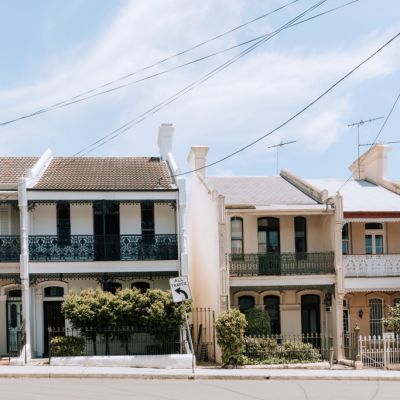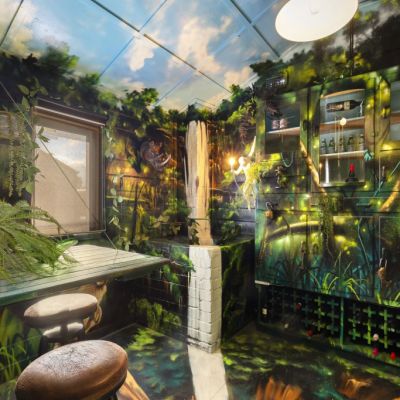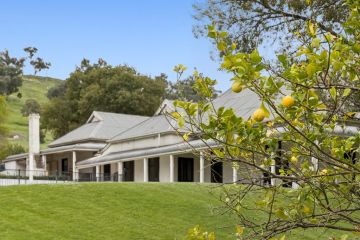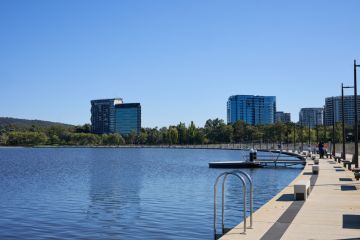‘A happy place for me’: The type of home buyers pay a premium for
Tom Midwood had a great time living in London for three years, except it felt like a concrete jungle – busy, cramped and hectic.
He knew when he came back he wanted to live near a park or nature reserve, or have a garden.

“You did feel yourself craving some naturalness and some greenery,” he said.
He’s not alone. Home buyers pay more money on average for properties that are listed for sale with greenery such as gardens, backyards or vegetable patches, a new report found.
Houses with greenery-related keywords on their listing fetch a premium of $140,000 or 17.4 per cent compared to houses without, found The Plant Value Report, commissioned by Greener Spaces Better Places, an initiative of horticulture industry advocacy group Horticulture Innovation Australia.
The report found units listed with greenery sell for a premium of $100,000 or 16.1 per cent compared to units without, based on 12 months of property listing data from Domain.
Midwood, a 33-year-old TV producer, and his partner came back to Melbourne in February and bought a three-bedroom house with a garden in inner-west Yarraville.
There are four raised beds planted with vegetables, plus flowers, and the surrounding flower beds feature native plants.
“The atmosphere of just being surrounded by greenery and leafy trees is very much a happy place for me,” he said. “It does give you a bit of a break from your work life and that side of things. It gives you a nice balance.”
He likes growing food and cutting herbs when preparing a meal. And he thought the home was too good an opportunity to turn down, even thought it came at a premium.

“As soon as we looked at the place we fell in love with it, it was a little bit outside our price range, but you could just see the potential for it,” he said. “It got to that point of, ‘I can’t really stop thinking about that house versus the other ones we were considering’.”
Domain chief of research and economics Dr Nicola Powell said many buyers felt an emotional connection to homes that include greenery, which can encourage them to spend more money.
“If you spur that emotion in a buyer, and trigger that emotion, this is when we become very connected with a place, and we’re willing to dig that little bit deeper,” she said.
“Unless you’re an investor and it’s about dollars and cents. But if you are a home owner, this is a place you’re trying to imagine yourself living.”
Powell said the price premium was evident in all capital cities because plants can add warmth, create a sense of calm, soften architecture, offer health and wellbeing benefits, and catch buyers’ attention.
Almost two-thirds of houses for sale did not mention greenery in the listing, which Powell thought could show the outdoor space wasn’t prioritised as much as the internals of the home, or in some cases that the gardens may be neglected. But she noted units don’t come with a backyard like houses do, and the price premium was still evident.
Among the capital cities, the highest premium for greenery was in Sydney, at 28.7 per cent for houses and 23.4 per cent for units.
The benefits of greenery go beyond the homes. Powell said established trees could reduce the temperature of suburbs and benefit wildlife.
Impacts on nature have been incorporated into the Green Star Rating system for buildings, which certifies buildings that are sustainable.
Green Building Council of Australia head of green star strategic delivery Elham Monavari, who was not involved in the report, is trying to bring nature back to cities for the wellbeing benefits, biodiversity and effect on urban heat as the climate changes.
“When you’re at home, you want to have that connection to nature – this is known as biophilia,” she said. “When we want to have that respite, when we’re feeling stressed in our lives, we often seek refuge in nature, and if that’s in our home, that’s wonderful.”
New residential developments that improve biodiversity, such as through native planting, perhaps rooftop gardens or planted balconies, can get credit towards their star rating. More greenery can help reduce excess heat, helping air conditioning systems run more efficiently and improving operational costs, she said.
Horticulturist Wes Fleming, a member of Horticulture Innovation Australia, the group behind the report, thought greenery could help regulate mood, keep people mobile and offer an alternative to screen time.
A well-planned garden could have an impact on the heating and cooling of a home, the director of Fleming’s Nurseries said.
“We are going to be living a lot more in apartments – our public open space, our parks, our grounds need to be given greater emphasis by our government,” he said.
We recommend
States
Capital Cities
Capital Cities - Rentals
Popular Areas
Allhomes
More
- © 2025, CoStar Group Inc.









